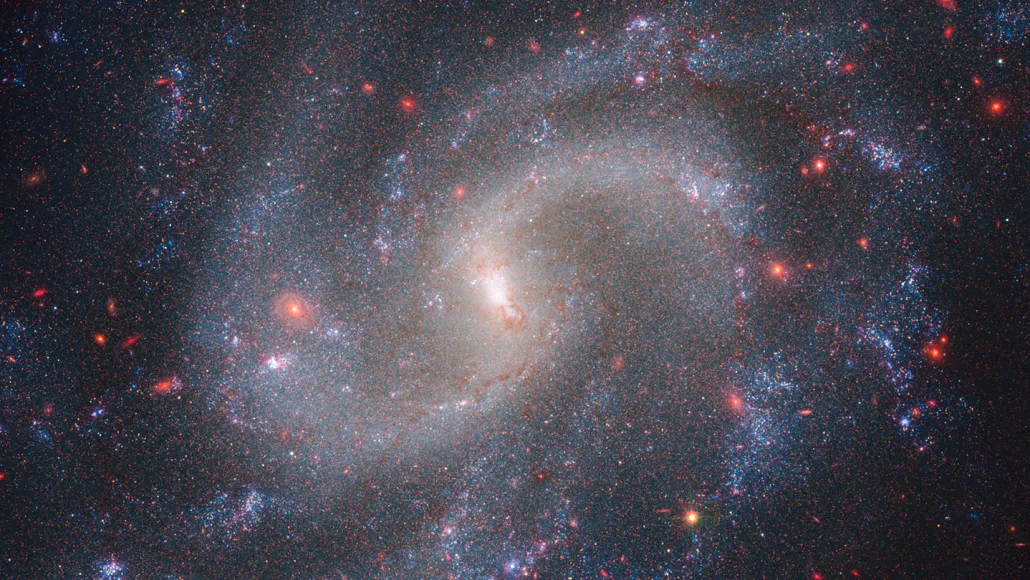The Cosmology Clash: A Potential Breakthrough in Measuring the Universe’s Expansion Rate
In the world of cosmology, few debates have been as intense as the one over the universe’s expansion rate—an enigma known as the “Hubble tension.” This clash arises from two conflicting methods of measuring the rate at which the universe expands, called the Hubble constant. The resolution of this issue may finally be within reach, thanks to the unprecedented observations from the James Webb Space Telescope (JWST).
The Origins of the Debate
The Hubble tension centers around two primary methods of measuring the expansion rate of the universe. The first method involves observing the cosmic microwave background (CMB)—the afterglow of the Big Bang. This method provides an expansion rate of about 67 kilometers per second per megaparsec (km/s/Mpc). The second method is based on observations of supernovas and Cepheid variable stars in nearby galaxies, which suggest a higher rate of 73 km/s/Mpc. This discrepancy has sparked intense debate, as resolving it could either point to unknown physics or indicate flaws in one of the measurement techniques.
Enter the James Webb Space Telescope
The JWST, with its advanced infrared capabilities, has brought a fresh perspective to this puzzle. By observing Cepheid stars and supernovas with greater precision than ever before, JWST has allowed scientists to revisit the earlier measurements made by the Hubble Space Telescope. The key advantage of JWST is its ability to peer through cosmic dust and isolate the light of distant Cepheids from that of surrounding stars. This sharpens the accuracy of distance measurements that are critical for calculating the universe’s expansion rate.
One of the first studies conducted using JWST data aimed to reassess distances to galaxies and recalibrate the “cosmic distance ladder,” a crucial tool for measuring supernovas and ultimately determining the Hubble constant. According to cosmologist Adam Riess, who leads one of the teams investigating the Hubble tension, the new JWST observations confirm the reliability of previous Hubble measurements. This finding reduces the likelihood that the tension is due to measurement errors, strengthening the case for a fundamental issue in our understanding of the universe.
A Possible Consensus
Despite these strides, the cosmological community remains divided. Riess’s team remains convinced that the Hubble tension is real, while another team led by cosmologist Wendy Freedman suggests that the differences might not be as significant as once thought. Freedman’s team used three types of stars to measure distances and reported an expansion rate closer to 70 km/s/Mpc, a value that lies between the two competing numbers. While this doesn’t entirely resolve the tension, it offers hope that consensus might be within reach.
The agreement on distance measurements, in particular, is a significant milestone. As Freedman noted, achieving this level of consensus on distances to nearby galaxies was unimaginable a decade ago. Both teams agree that more data, particularly from JWST, is needed to settle the debate once and for all.
The Bigger Picture
The implications of resolving the Hubble tension go beyond just refining a single number. The standard cosmological model, which includes mysterious entities like dark matter and dark energy, relies on accurate measurements of the universe’s expansion. If the Hubble tension is confirmed as a real issue, it could suggest that something fundamental in our understanding of the universe is missing. Perhaps we need new physics to explain this discrepancy, or perhaps the nature of dark energy and dark matter needs to be reconsidered.
For now, the debate continues. With JWST providing clearer data and future telescopes like the Nancy Grace Roman Space Telescope and the European Space Agency’s Euclid mission poised to offer additional insights, cosmologists are optimistic that a resolution is on the horizon. As Riess put it, the tools are finally in place to resolve this decades-long conundrum, and the next few years could be transformative for our understanding of the cosmos(HubbleSite , Space.com).




